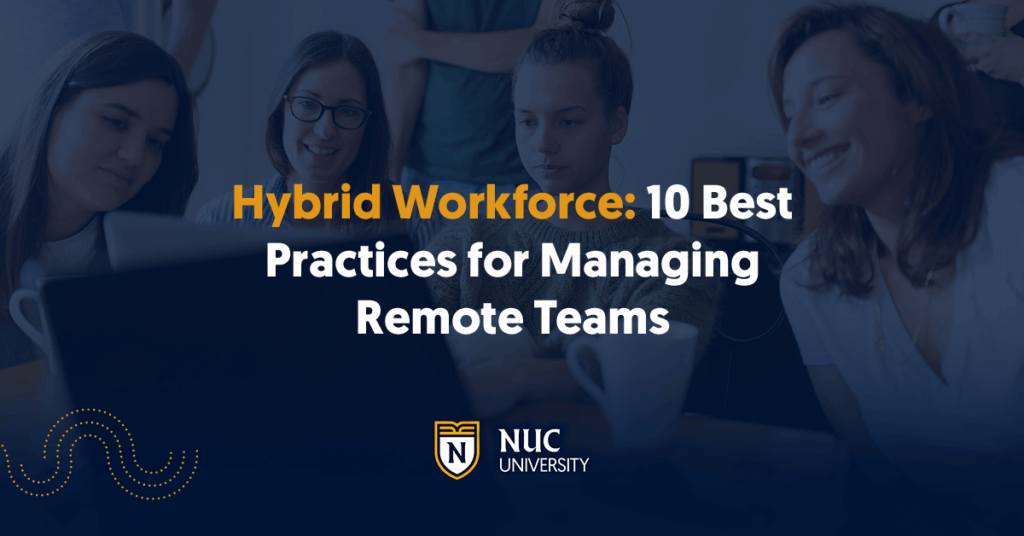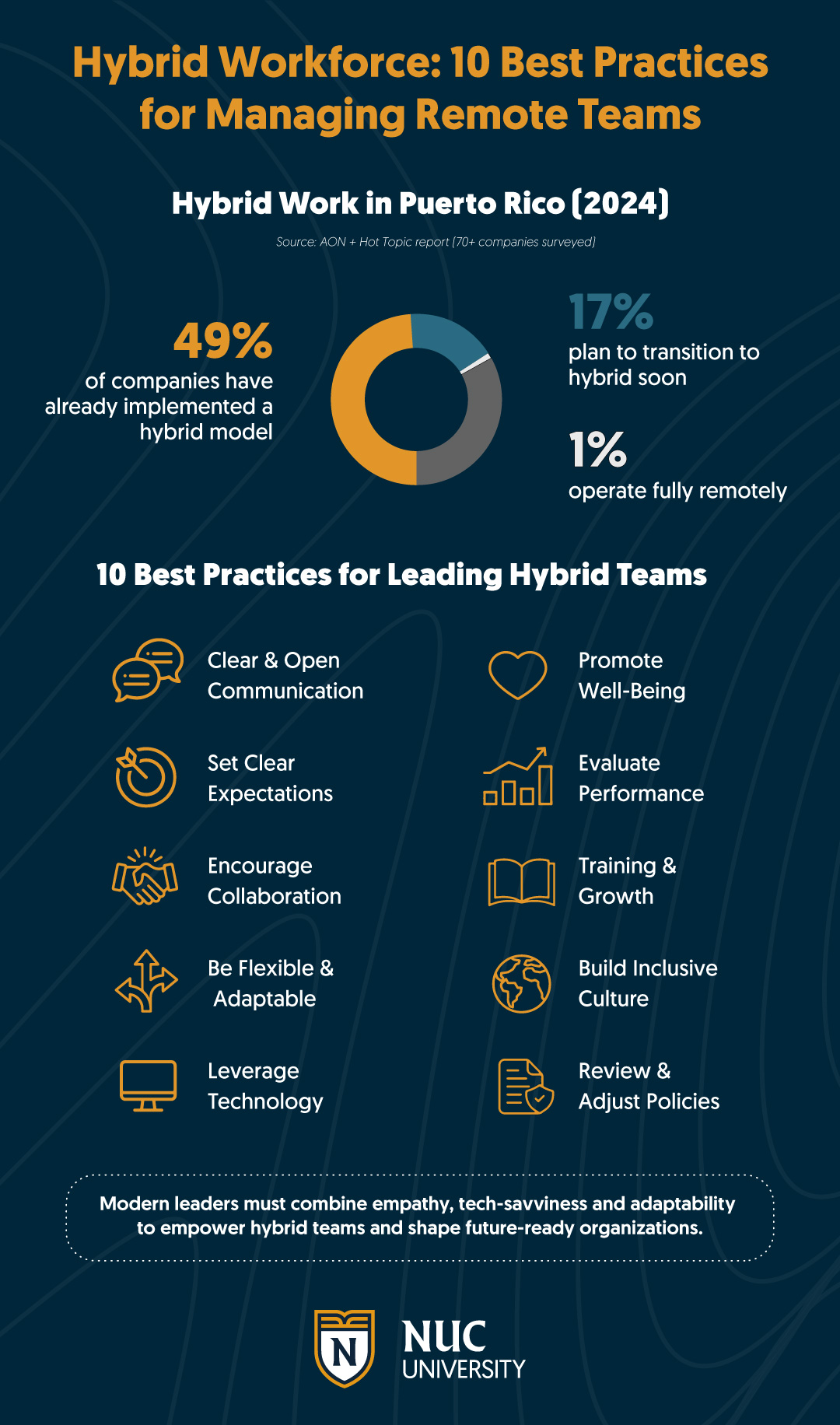The pandemic reshaped many aspects of our lives, including our work routines. Some of these changes are here to stay. On a professional level, the most revolutionary shift has been the adoption of hybrid and remote work models. In Puerto Rico, hybrid work has become widely accepted—according to a recent AON study, 49% of businesses on the island have implemented it and continue to use it. Additionally, up to 17% of them plan to transition away from a fully in-person model in favor of a hybrid approach, while only 1% operate entirely remotely.
The report Hot Topic: Prácticas para el balance entre la vida personal y professional (Hot Topic: Best Practices for Balancing Personal and Professional Life) gathered insights from over 70 companies across various industries. The education sector is no exception, and at NUC University, we are committed to achieving a highly efficient hybrid workforce.
To ensure a successful hybrid work model, leaders and managers must effectively guide their teams and implement strategies to efficiently optimize collaboration in a hybrid environment. At NUC University, we prioritize professional development and understand the importance of adapting to new work structures to enhance productivity, teamwork, and employee well-being.
Best Practices for Effective Leadership in a Hybrid Work Model
1. Maintain Clear and Open Communication
Well-defined and accessible communication channels help ensure that all employees stay informed and aligned with organizational goals. Digital tools and regular meetings help maintain team cohesion and engagement.
2. Set Clear Expectations
Clearly defining responsibilities and deadlines from day one ensures that all employees understand their roles and objectives.
3. Encourage Collaboration and Teamwork
Leverage valuable resources such as chat platforms, video calls, and project management tools to keep employees connected. Scheduling in-person workdays can further strengthen professional relationships and mentorship opportunities.
4. Be Flexible and Adaptable
Offering flexible work arrangements shows empathy, boosts job satisfaction, improves retention, and creates a more inclusive and engaging workplace.
5. Leverage Technology
Investing in and implementing the right digital tools is critical for hybrid work success, enhancing efficiency and streamlining communication.
6. Promote Well-Being and Mental Health
Promoting a healthy work-life balance, offering support resources, and encouraging wellness initiatives contribute to a more engaged and productive workforce.
7. Evaluate Performance Regularly
Data-driven performance metrics help organizations assess the effectiveness of hybrid work.
8. Ongoing Training and Professional Growth
Providing employees with digital and time-management skills is key to helping them succeed in a hybrid setting.
9. Build an Inclusive Culture
Recognizing and celebrating employee contributions, regardless of their work location, ensures a sense of belonging and team unity.
10. Review and Adjust Policies
The work environment is always evolving—keep hybrid work policies up to date to meet employees’ changing needs and business objectives.
Sources:
Companies in Puerto Rico plan on hybrid work https://www.theweeklyjournal.com/top-stories/companies-in-puerto-rico-plan-on-hybrid-work/article_2e7f464e-3d5d-11ef-b28b-ffa52827d643.html
E-Leadership: Lessons Learned from Teleworking in the COVID-19 Pandemic https://www.intechopen.com/chapters/79112
6 good practices for managing your teleworking team https://www.mozzaik365.com/blog-posts/telework-team-manager





